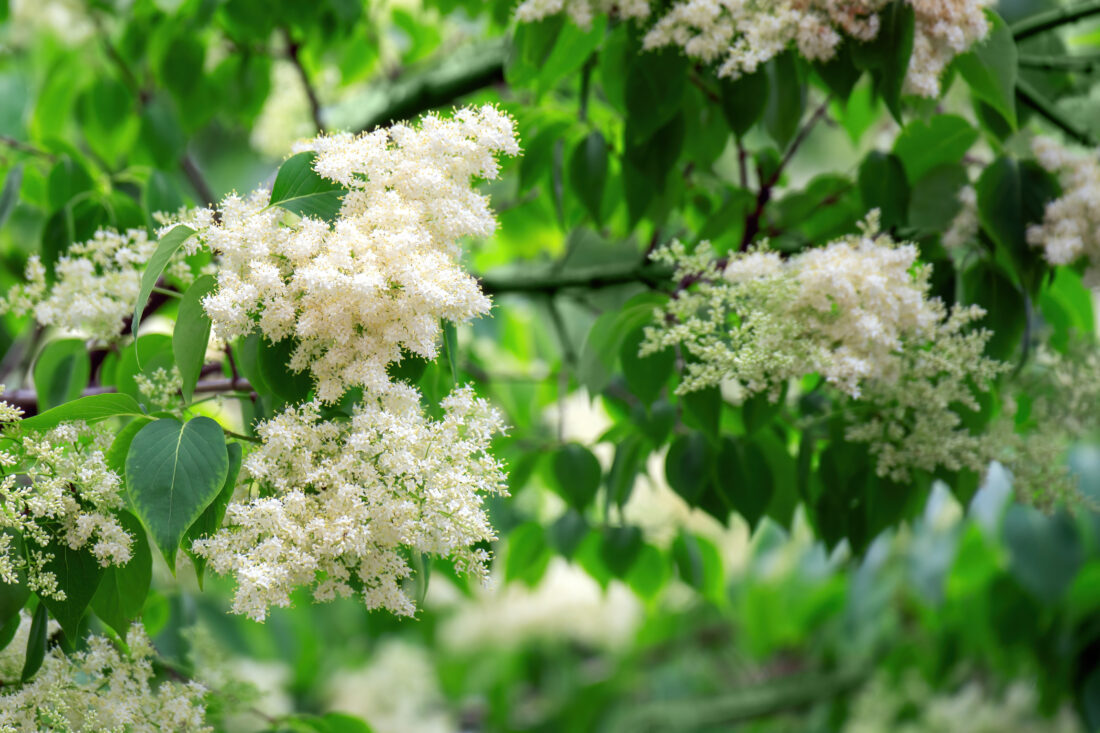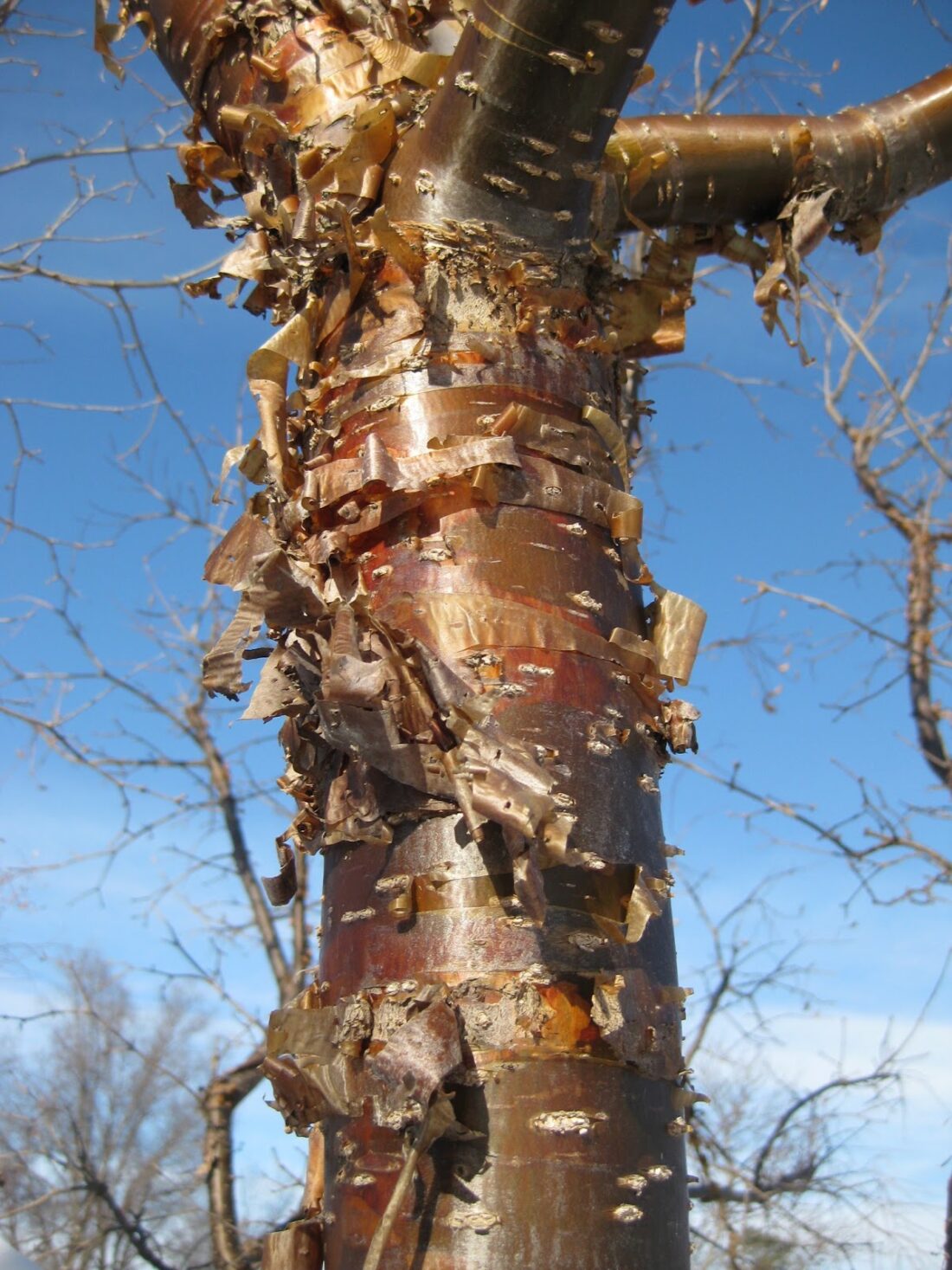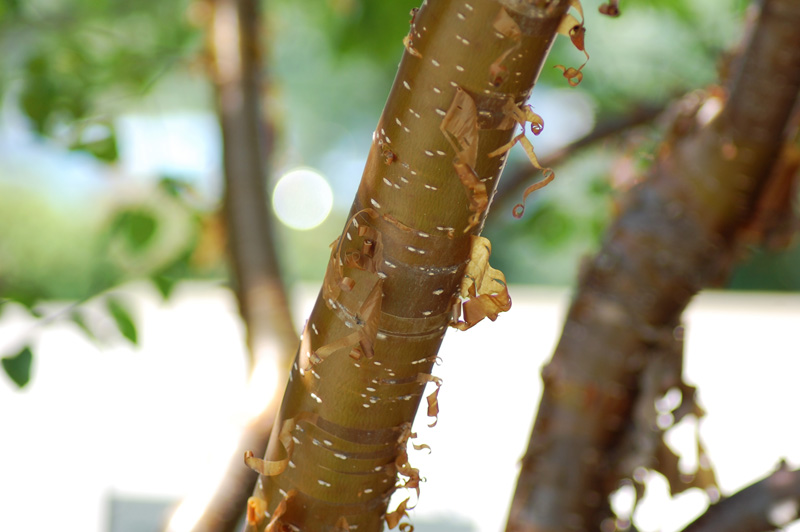First of all, last week was pretty awesome. The weather in Maine had been holding steady, but then on Wednesday, we flew out for our spring board meeting for Coastal Maine Botanical Gardens (CMBG) in Chicago. When we landed, it was in the mid-80s, and Lake Shore Drive was bustling with runners and cyclists soaking in the unexpected warmth. But true to Chicago’s unpredictable nature, by Thursday and Friday, temperatures had plummeted into the 50s. Despite the chill, our enthusiasm for touring the Chicago Botanic Garden and the Morton Arboretum was unwavering. This was my first trip to Chicago, and visiting both gardens—places I’d wanted to see for years—felt like ticking off a couple of major items on my horticultural bucket list.

Both gardens are massive, so our tours were necessarily brief and covered only portions of each site. Still, I was struck by the variety of designs and the plants uniquely suited to the Midwest climate. One plant, in particular, caught my attention: Syringa pekinensis, commonly known as the Peking lilac.
Syringa pekinensis – The Peking lilac
The tree stood just outside the walled garden at the Chicago Botanic Garden , and this particular specimen was the cultivar ‘Morton,’ trademarked as China Snow®. Though it was just starting to leaf out and hadn’t yet flowered, what immediately drew me in was its stunning exfoliating bark. The bark had a rich, cinnamon-brown hue that peeled away in delicate, papery strips, much like the familiar paperbark maple (Acer griseum). Even without flowers, the bark alone made this tree a standout.

The flowers, which I didn’t get to see on this trip, are supposed to bloom in June, producing clusters of creamy white blossoms that contrast beautifully against the dark, textured bark. The Peking lilac isn’t just about aesthetics, though—it’s also a hardy and adaptable tree. Native to northern China, it thrives in USDA zones 4 to 7, making it well-suited for colder climates. However, it doesn’t fare well in hotter regions; anything warmer than zone 7, and the tree begins to struggle.
In terms of size, Syringa pekinensis matures at about 25 to 30 feet in height and spreads around 25 feet wide. It’s an ideal small ornamental tree for urban settings, offering multi-season interest—from its fragrant summer flowers to its striking winter bark. Its adaptability to different soil types and resistance to common lilac diseases make it a valuable addition to any landscape.

China Snow Lilac – The white lilac
China Snow® lilac is a special selection from the collections at the Morton Arboretum, developed as part of the Chicagoland Grows program—a collaborative effort aimed at introducing hardy, reliable plants for Midwest landscapes. This program has a reputation for producing plants that combine beauty with resilience, and China Snow® certainly fits that mold.

After seeing this tree in person, I can’t wait to add one to the gardens at Coastal Maine. Its hardiness and unique aesthetic would make it a perfect fit for our collection, offering something a little different for visitors to admire throughout the seasons. If you’re in a suitable zone and looking for an ornamental tree with year-round appeal, the Peking lilac might just be your next great find.
–Rodney
Photos: rotarygarden.blogspot.com, davesgarden.com, thebenjamin.wordpress.com
Peking Lilac looked like no other tree I ever saw, it looked magnificent almost like a human created beautiful sculpture.